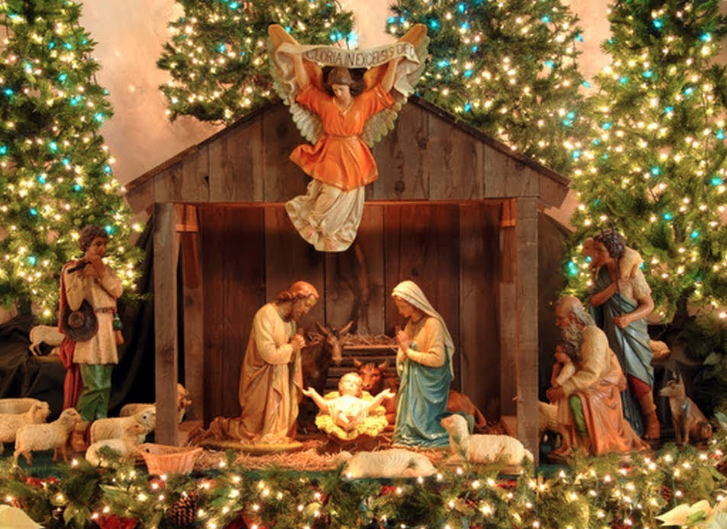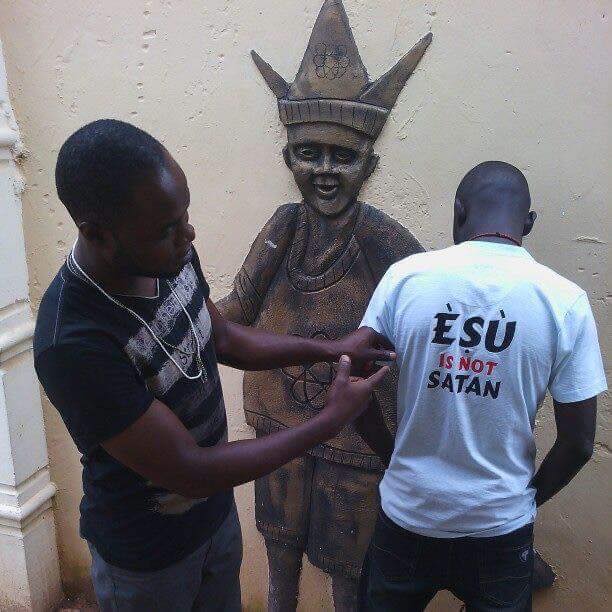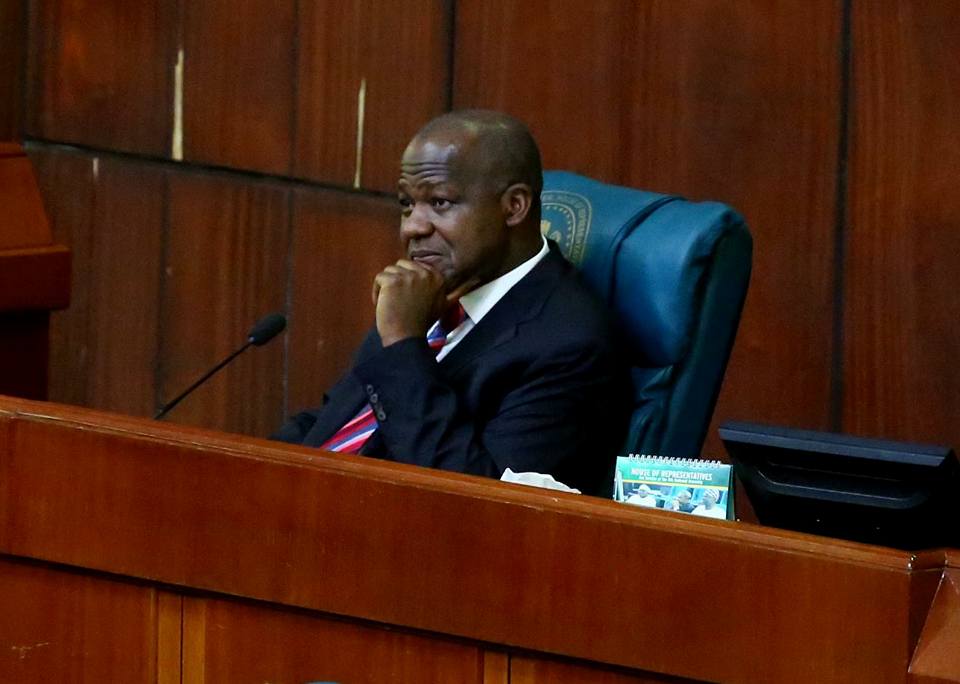BY ANEKWE OBORJI
We have chosen for our Christmas and New Year reflection this year, the theme of Christmas Crib and the surprises of God in turbulent times. Our bearing is from the two separate Christmas Messages of Pope Francis to the Roman Curia and the families of Vatican employees respectively, which the Pope gave on December 21, 2018 in the Vatican. Drawing our attention to the significance of Christian hope and courage embodied in the message of the Nativity scene (Christmas Crib), Pope Francis said.
“Dear brothers and sisters, this year, in our turbulent world… we are also experiencing a new age of martyrs. It seems that the cruel and vicious persecution of the Roman Empire has not yet ended. A new Nero is always being born to oppress believers solely because of their faith in Christ. New extremist groups spring up and target churches, places of worship, ministers and members of the faithful. Cabals and cliques new and old live by feeding on hatred and hostility to Christ, the Church and believers. How many Christians even now bear the burden of persecution, marginalization, discrimination and injustice throughout our world. Yet they continue courageously to embrace death rather than deny Christ. How difficult it is, even today, freely to practice the faith in all those parts of the world where religious freedom and freedom of conscience do not exist.” (Pope Francis, ‘Christmas Greetings to the Roman Curia’, 21 December 2018).
There is no-gain-saying the fact that the above citation from Pope Francis’ Christmas Message and Greetings to the Roman Curia, reflects the critical situation in which many people and nations, especially, our troubled African nation states, like my country Nigeria and elsewhere, found themselves today. However, the fragile image of the Infant Jesus born in the Manger and the joy of all other characters in that Nativity scene of Bethlehem, reminds us that it is in a critical situation and turbulent time like ours today, the message of Christmas shines out clearly. It is in his humility and fragility that God reveals to us his saving power, mercy and love.
As St. Paul tells us, ‘in God’s weakness is our strength.’ These are the surprises of God, which we celebrate at Christmas. They are the surprises of God our Christmas Cribs, in churches, public places and homes, try to recapture and depict in an artistic representation. Christmas Crib tells us not to give up to despair and hopelessness in turbulent times like ours today. The message of Christmas Crib is simple and direct: ‘The time of crisis and trials is the time of God’s surprises in our lives and situations.’
Advertisement
For us Christians, the greatest surprises of God is in the mystery of incarnation in human flesh of the Son of God, Jesus Christ and his crucifixion on the cross on Good Friday, the Paschal mystery being the culmination of it all. At Christmas, Christians celebrate the event of the incarnation in human flesh of the Son of God. The incarnation and the Paschal (Easter) mystery are the core of our Christian faith. They both celebrate the triumph of (what the world would consider) God through Christ over human foolishness, forces of sin and darkness.
It is by humbling himself in fragility, becoming small and weak, allowing himself to be born in human flesh, that the Son of God, Jesus Christ accomplished our redemption and salvation. It is in his smallness, weakness and fragility, in human flesh, the Babe of Bethlehem born in the Manger, freed us from the shackles of sins, human wickedness and darkness.
This is the message of Christmas Crib, which is the saving message of Christmas itself. It reminds us that, ‘in moments of social, political and religious situation like ours today, marked by tension, unrest and gloom, God surprises us with the gift of the Babe of Bethlehem,’ who is “The light that shines in the darkness, and the darkness will never overcome it” (John 1:5).
Advertisement
This is the significance of Nativity scene of the Child Jesus at Bethlehem (Christmas Crib). It is the message of hope that the Child Jesus born at the Manger in Bethlehem has brought to the world. It is a message of how not to give up to despair and hopelessness in moment of trials and turbulence that plagues the world today. Christmas Crib brings us message of hope and love of God for humanity, which assures us that only the Child Jesus, the Son of God, born at the Manger in Bethlehem, is our hope, peace and Savior as we journey through the crucibles of this tortured world.
Furthermore, in his Christmas Message to families of Vatican employees on December 21, 2019, Pope Francis said:
“At the Nativity scene, Our Blessed Mother Mary and St. Joseph are happy because, after a thousand worries, they have received this Gift from God with so much faith and so much love. They are overflowing with holiness and therefore with joy. This is the path of holiness. Saints are not born, they become so, and this also applies to us today. We are invited to allow ourselves to be ‘infected’ by the joy of the Babe of Bethlehem.”
In this context, Pope Francis explained that, “the shepherds are full of joy and hence are also saints because they respond to the angels’ announcement and the Child in the Manger.” The wonder in the eyes of the shepherd boy in a nativity scene expresses the astonished joy of those who welcome the mystery of Jesus with the spirit of a child. “This is a trait of holiness: to preserve the ability to be amazed, to marvel at the gifts of God, at his ‘surprises’, and the greatest gift, the ever new surprise, is Jesus.”
Advertisement
In larger Nativity scenes (Christmas Crib), Pope Francis pointed out that, there are many characters representing various trades such as the cobbler, the water carrier, the blacksmith, the baker and others, all of whom are happy. This is because they are, so to say, “infected” by the joy of the event they are participating in, namely, the birth of Jesus. So also, their work is sanctified by the presence of Jesus, by his coming among us. “They are joyful, not because they laugh, but because they have great serenity within that comes from Jesus, the Emmanuel, God-with-us, and they know how to transmit it to others.”
All this implies that, the joy and happiness experienced by all those characters at the Nativity scene we celebrate at Christmas, come from their realization of the fulfilment of their hope as a people and as individuals, God’s promise of Messiah and liberator of his people, in the Infant Jesus in the Manger. Their hope on the power of God to save his people from sin and darkness, is now fulfilled with the birth of Jesus in the Manger at Bethlehem. The Nativity scene celebrates the fulfilment of God’s Covenant with his people, Israel. It is a joy of a people seeing the Promised Messiah, the Son of God, Jesus, finally been born in human flesh, and now dwells among us, Emmanuel, ‘God-with-us.’
In concrete terms, the Nativity scenes remind us that one should not give up the hope in God because of difficulties and trials of our times. That no matter what, at the appointed time, God will surely come, save us, and smile at us with the face of the Child Jesus born at Bethlehem on the Christmas day. That sufferings and trials do not have the last words. The last word belongs to the Word of God born in human flesh at Christmas in Bethlehem.
We are created in the image and likeness of God not for eternal suffering in this world, but for the glory of God, to share in the inner life of God Himself, the Father, the Son and the Holy Spirit, the Trinitarian life of communion and love (cf. Romans 8:18-30).
Advertisement
What is Christmas Crib (Nativity Scene)?
In Christian tradition, Christmas Crib (also known as a nativity scene, a manger scene, crib, crèche, or in Italian presepio or presepe), is the special exhibition, particularly during Christmas season, of art objects representing the birth of Jesus. While the term “nativity scene” may be used of any representation of the very common subject of the Nativity of Jesus in art, it has a more specialized sense referring to seasonal displays, either using model figures in a setting or reenactments called “living nativity scenes” (tableau vivant) in which real humans and animals participate. Nativity scenes exhibit figures representing the Infant Jesus, his mother Mary, and her husband, Joseph.
Advertisement
Other characters from the Nativity story, such as shepherds, sheep, and angels may be displayed near the manger in a barn (or cave) intended to accommodate farm animals, as described in the Gospel of Luke. A donkey and an ox are typically depicted in the scene, and the Magi and their camels, described in the Gospel of Matthew, are also included. Several cultures add other characters and objects that may or may not be Biblical.
St. Francis of Assisi is credited with creating the first live nativity scene in 1223 in order to cultivate the worship of Christ. He himself had recently been inspired by his visit to the Holy Land, where he had been shown Jesus’ traditional birthplace. The nativity scene created by St. Francis is described by St. Bonaventure in his “Life of Saint Francis of Assisi” written in 1260.
Advertisement
Staged in a cave near Greccio, St. Francis’ nativity scene was a living one with humans and animals cast in the Biblical roles. Pope Honorius III gave his blessing to the exhibit. The scene’s popularity inspired communities throughout Catholic countries to stage similar pantomimes.
Such reenactment pantomimes became hugely popular and spread throughout Christendom. Within a hundred years, every church in Italy was expected to have a nativity scene at Christmastime. Eventually, statues replaced human and animal participants, and static scenes grew to elaborate affairs with richly robed figurines placed in intricate landscape settings. Charles III, King of the Two Sicilies, collected such elaborate scenes, and his enthusiasm encouraged others to do the same.
Advertisement
The scene’s popularity inspired much imitation in Catholic countries, and in early modern period, sculpted cribs, often exported from Italy, were set up in Catholic churches and homes. These elaborate scenes reached their artistic apogee in the Papal state, in Emilia, in the Kingdom of Naples and in Genoa. By the end of the 19th century nativity scenes became popular beyond Catholic settings, and many versions in various sizes, made of various materials, such as terracotta, paper, wood, wax, and ivory, were marketed, often with a backdrop setting of a stable.
Distinctive nativity scenes and traditions have been created around the world, and are displayed during the Christmas season in churches, homes, shopping malls, and other venues, and occasionally on public lands and in public buildings.
In 1982, Pope St. John Paul II inaugurated the annual tradition of placing a nativity scene on display in the Vatican City in St. Peter’s Square beside the Christmas Tree. Since then the Vatican has displaced a Nativity scene in St. Peter’s Square near its Christmas tree and the Pope, has for many years blessed the mangers of children assembled in St. Peter’s Square for a special ceremony.
Christmas Crib: Its Biblical Basis
A Christmas Crib (Nativity scene) takes its bearing from the accounts of the birth of Jesus in the Gospels of Matthew and Luke. Luke’s narrative describes an angel announcing the birth of Jesus to shepherds who then visit the humble site where Jesus is found lying in a manger, a trough for cattle feed (cf. Luke 2:8-20).
Matthew’s narrative tells of “wise men” (Greek: magoi (Magi) who follow a star to the house where Jesus dwelt, and indicates that the Magi found Jesus some time later, less than two years after his birth, rather than on the exact day (cf. Matthew 2:1-23). Matthew’s account does not mention the angels and shepherds, while Luke’s narrative is silent on the Magi and the star. The Magi and the angels are often displayed in a nativity scene with the Holy Family and the shepherds although there is no scriptural basis for their presence (cf. Luke 2:7; 2:12; 2:17).
Again, in the case of Luke’s account, it is a wonderful thing that the story of Jesus’ birth should tell that the first announcement of God came to some shepherds. Shepherds were despised by the orthodox good people of the day. They were quite unable to keep the details of the ceremonial law; they could not observe all the meticulous hand-washings and rules and regulations. Their flocks made far too constant demands on them; and so the orthodox looked down on them. It was to such simple men and women of the fields that God’s message first came.
But these were in all likelihood very special shepherds. As Bible shows, in the Temple worship, morning and evening, an unblemished lamb was offered as a sacrifice to God. To see to the supply of perfect offerings was always available the Temple authorities had their own private sheep flocks; and as a matter of fact, these were flocks pastured near Bethlehem. Thus, it is most likely that these shepherds were in charge of the flocks from which the Temple offerings were chosen. It is a lovely thought that the shepherds who looked after the Temple lambs were the first to see the Lamb of God who takes away the sin of the world.
Furthermore, in a traditional Jewish setting, when a boy is born, the local musicians congregated at the house to greet him with simple music. Jesus was born in a stable (manger) in Bethlehem and therefore that ceremony could not be carried out. It is lovely thought that the minstrelsy of heaven took the place of the minstrelsy of earth, and angels sang the songs for Jesus that the earthly singers could not sing.
Furthermore, as regards Matthew’s narrative, it was in Bethlehem that Jesus was born. This was in fulfilment of the prophecy of Micah: “Thus says the Lord: You, O Bethlehem Ephrathah, who are little to be among the clans of Judah, from you shall come forth for me one who is to rule in Israel, whose origin is from old, from ancient days.” (Micah 5:2-5).
Bethlehem was quite a little town six miles to the south of Jerusalem. The name Bethlehem means ‘The House of Bread’, and Bethlehem stood in a fertile countryside, which made its name a fitting name. Bethlehem had long history. It was there that Jacob had buried Rachel, and had set up a pillar of memory beside her grave (cf. Genesis 48:7; 35:20), and from Bethlehem Ruth could see the land of Moab, her native land, across the Jordan valley. But above all, Bethlehem was the home and city of David (1 Samuel 16:1; 17:12; 20:6). And it was for the water of the well of Bethlehem that David longed when he was a hunted fugitive upon the hills (2 Samuel 23:14-15).
In the history of Israel, and to the minds of the people, Bethlehem was uniquely the city of David. It was from the line of David that God was to send the great deliverer of his people (Micah 5:2). It was in Bethlehem, David’s city, that the Jews expected great David’s greater Son to be born; it was there that they expected God’s Anointed One to come into the world. And it was so.
The picture of the stable and the manger as the birthplace of Jesus is a picture indelibly etched in our minds. To this Justin Martyr, one of the greatest of the early Church Fathers, who lived about A.D. 150, and who came from the district near Bethlehem, tells us that Jesus was born in a cave near Bethlehem (Justin Martyr: Dialogue with Typho, 78, 304). Justin’s testimony, however, does not in any way contradict our picture of Jesus born in the stable and manger at Bethlehem.
The fact is that houses in Bethlehem are built on the slope of the limestone ridge; and it is very common for them to have a cave–like-stable hollowed out in the limestone rock below the house itself; and very likely it was in such a cave-stable that Jesus was born.
To this day such a cave is shown in Bethlehem as the birthplace of Jesus and above it the Church of the Nativity has been built. For very long that cave has been shown as the birthplace of Jesus. It was so in the days of the Roman Emperor Hadrian, for Hadrian, in a deliberate attempt to desecrate the place, erected a shrine to the heathen god Adonis above it. When the Roman Empire became Christian, early in the fourth century, the first Christian Emperor, Constantine, built a great church there, and that church, much altered and often restored, still stands.
Till today, beneath the high altar, of the Church of Nativity in Bethlehem, is the cave, in the floor there is a star, and around it a Latin inscription: “Here Jesus Christ was born of the Virgin Mary.”
When the Lord of glory came to this earth, he was born in a cave where men sheltered the beasts. The cave in the Church of the Nativity in Bethlehem is something beautiful in symbolism that the church where the cave is has a door so low that all must stoop to enter. It is supremely fitting that every man and woman should approach the Infant Jesus upon his knees.
Matthew also tells us that when Jesus was born in Bethlehem, there came to do him homage wise men from the East. It may seem to us extraordinary that these men should set out from the East to find a King. However, the fact is that about the time Jesus was born, there were social, political and religious tensions, crisis of all kinds across the known world. Thus, there developed a strange feeling across the board, of expectation of the coming of a King.
Even the Roman historians knew about this. Not so very much later than this Suetonius could write, “There had spread over all the Orient an old and established belief, that it was fated at that time for men coming from Judea to rule the world.” (Suetonius: Life of Vespasian, 4:5). Tacitus tells us of the same belief that “there was a firm persuasion … that at this very time the East was to grow powerful, and rulers coming from Judaea were to acquire universal empire.” (Tacitus: Histories, 5: 13).
The Jews themselves had the belief that “about that time one from their country should become governor of the habitable earth.” (Josephus: Wars of the Jews, 6:5, 4). At a slightly later time we find Tiridates, King of Armenia, visiting Nero at Rome with his Magi along with him (Suetonius: Life of Nero, 13:1). We find the Magi in Athens sacrificing to the memory of Plato (Seneca: Epistles, 58: 31).
Almost at the same time as Jesus was born we find Augustus, the Roman Emperor, being hailed as the Savior of the World, and Virgil, the Roman poet, writing his Fourth Eclogue, which is known as the Messianic Eclogue, about the golden days to come.
Therefore, it is absolutely, wrong for anybody to think that the story of the coming of the Magi to the cradle of Christ is only a lovely legend. It is exactly, the kind of thing that could easily have happened in that ancient world. When Jesus Christ came, the world was in an eagerness of expectation. Men were waiting for God, the Savior and the desire for God was in their hearts.
At the time Jesus was born at Bethlehem, men had discovered that, left on their own, they could not build the golden age without God. It was to the waiting world that Jesus came; and, when he came, the ends of the earth gathered at his cradle. It was the first sign and symbol of the world won by Jesus Christ for His Father in heaven. Jesus came into the world to live for men, and in the end, to die for them. He came to give us his life and his death for our liberation and salvation from sin and servitude.
Conclusion
In this, our short reflection on Nativity scene (Christmas Crib), one fact remains constant: God chooses what the world despises, as poor and weak, to fulfil his plan. He will not have the Savior come from the great city like Jerusalem, but from a small village, Bethlehem. He will not be from a rich powerful family, but from a poor one, just as with David at the beginning of the kingdom.
The narratives of Luke and Matthew of the Nativity scene, show how the prophecy of the expected Messiah, the Savior and Redeemer of the World, was fulfilled in Jesus, the Son of Mary. She, too, is of the poor, one of those who goes unnoticed by others. The episode of the Nativity scene invites us to be patient and obedient in times of tribulations and trials as Jesus was, so that God can manifest his love through our weakness.
Christmas Crib reminds us of the simplicity of the birth of the Son of God. We might have expected that, if he had to be born into this world at all, it would be in a palace or a mansion. Unfortunately, “his ways are not our ways.”
Ours is a God who knows that “one cannot rule his people unless he knows how they live.” It is the great thought of the Christian faith that we have a God who knows the life we live because he too lived it and claimed no special advantage over common people.
These are the “surprises” of God, whom we adore in the Infant Jesus, born on a Christmas Day at Bethlehem!
Merry Christmas and Prosperous New Year 2019, full of Joy and Blessings of the Infant Jesus. Amen!
Views expressed by contributors are strictly personal and not of TheCable.
Add a comment






